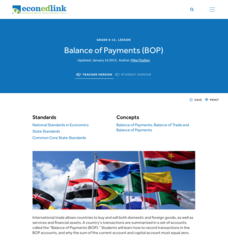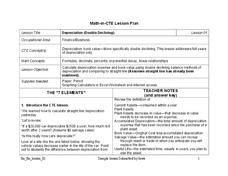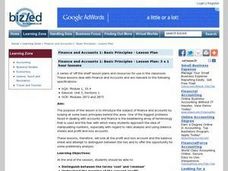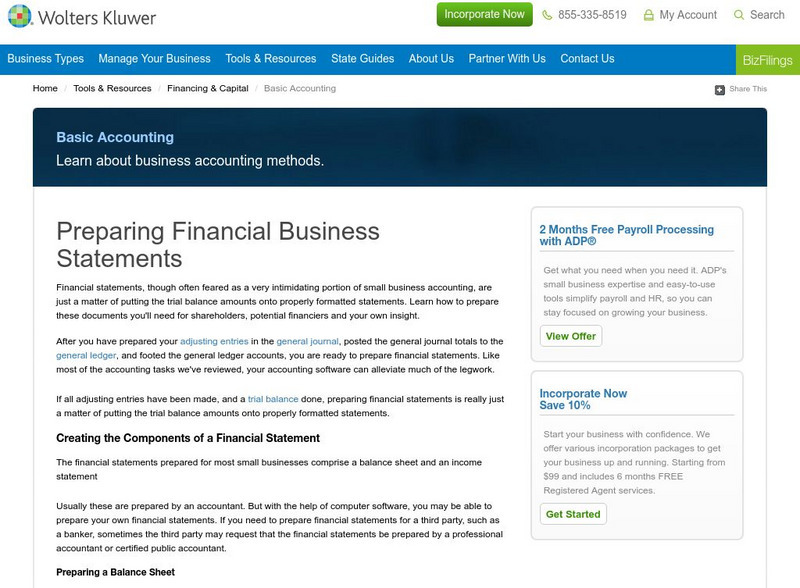Council for Economic Education
Understanding a Balance Sheet
Read any financial website or book, and it is bound to discuss the words asset and liability. But what do these words actually mean to the class? The resource effectively explains by using multiple formats and techniques, including...
Council for Economic Education
Balance of Payments (BOP)
Have you ever checked your clothes to see how many nations created them? Pupils take a deeper look at international trade and the balance of payments nations have with one another. They use calculations, simulations, and primary sources...
National Research Center for Career and Technical Education
Depreciation (Double Declining)
Have you ever been told that your new car begins to lose its value as soon as you drive it off the lot? Aspiring accountants take on the concepts of depreciation and book value through an easy-to-deliver career and technology lesson. The...
Curated OER
Preparing a Balance Sheet
Students prepare a balance sheet. In this balance sheet lesson, students learn the parts of a balance sheet and how they are represented. Students use a formula to calculate equity.
Curated OER
Finance and Accounts 1: Basic Principles
Students distinguish between the terms 'cost' and 'revenue' and examine the concept of 'profit'. They analyze the difference between a profit and loss account and a balance sheet.
Wolters Kluwer
Small Business Guide: Financial Statements
The four main financial statements, the balance sheet, the income statement, position statement, and statement of changes in owner's equity are listed with links for more detailed information. The importance of financial statements along...
Other
Accounting study.com: Liabilities
This site from accountingSTUDY.com describes accounts for both current and long-term liabilities. There are numerous links to other sites about accounting on this page.
Other
Inc.: The Financial Section of a Business Plan
The article, written in October 1999, explains the significance of a business plan that informs potential venture capitalists of the goals, use of new capital proceeds, marketing plan, income statement and other financial projections.
Texas Education Agency
Texas Gateway: Ch. 13: Money and Banking: Key Terms
This is a list of key terms and definitions covered in Ch. 13: Money and Banking from the Texas Gateway AP Macroeconomics online text.
Council for Economic Education
Econ Ed Link: Understanding a Balance Sheet
A balance sheet shows the assets, liabilities, and net worth for a business on a given day. This business document is one of the major documents used in evaluating a business. Students will learn the components of a balance sheet by...
Khan Academy
Khan Academy: Interpreting the Balance Sheet
Learn the differences between Assets and Liabilities, and how to calculate Total Equity. Understand Balance Sheet items like Cash, Accounts Receivable, and Deferred Revenue.
Khan Academy
Khan Academy: Introduction to Fractional Reserve Banking
Learn the basic concepts behind fractional reserve banking, including balance sheets, required reserves, and excess reserves.













